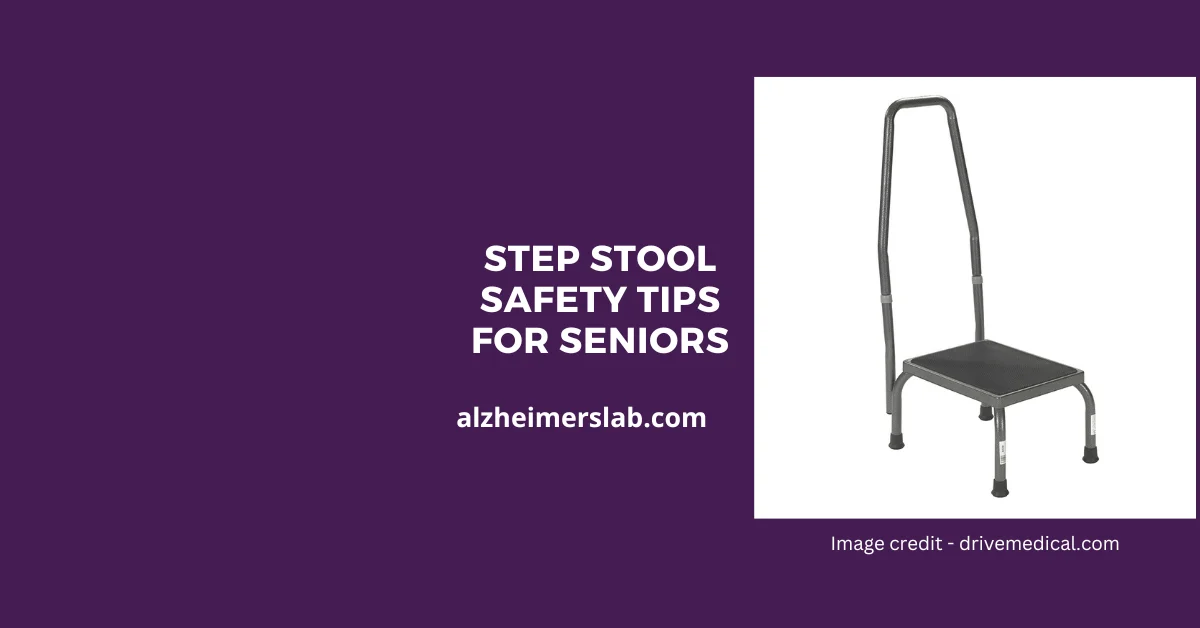Step Stool Safety Tips for Seniors
Are you a senior looking to maintain your independence and perform everyday tasks around the house with ease?
Step stools can be incredibly useful tools to help you reach higher shelves, access overhead cupboards, or perform household chores. However, they can also pose safety risks, especially for seniors who may have reduced mobility, balance issues, or other age-related challenges.
In this blog post, I share with you essential step stool safety tips specifically tailored to seniors. By following these guidelines, you can ensure stability, minimize the risk of accidents, and continue to live independently with confidence.
Choosing the Right Step Stool
Selecting an appropriate step stool is the first step in ensuring safety for seniors. Consider these factors before making a purchase:
Height and Reach
Opt for a step stool that provides the ideal height to access the areas you need without overstretching or losing balance. Avoid using makeshift items like chairs or boxes, as they lack the stability and security of a purpose-built step stool.
Weight Capacity
Check the step stool’s weight capacity, ensuring it can comfortably support your weight. Many step stools are designed to accommodate up to 300 pounds, but it’s always better to choose one with a higher capacity if available.
Non-Slip Surface
Look for step stools with a non-slip surface on the steps and platform. This feature significantly reduces the risk of slipping, providing a secure foothold for seniors, even when wearing socks or smooth-soled shoes.
Placing and Positioning the Step Stool
Proper positioning of the step stool is crucial to prevent accidents. Follow these guidelines to ensure stability:
Level Surface
Place the step stool on a flat, even surface to prevent wobbling or tipping. Avoid using it on uneven flooring, carpets, or slippery surfaces.
Clear the Area
Before using the step stool, ensure the area around it is clutter-free. Remove any obstacles or tripping hazards that may cause accidents.
Wall Support
Whenever possible, position the step stool near a wall or sturdy surface that seniors can use to steady themselves if needed.
If you need to reach a high shelf in the kitchen, place the step stool against the counter or wall to create additional support and stability.
Climbing and Descending Safely
Climbing up and down the step stool requires careful consideration to avoid falls:
Face the Step Stool
Always face the step stool when ascending or descending. Avoid the temptation to reach sideways, as this can throw off your balance.
Maintain Three Points of Contact
Seniors should have at least three points of contact with the step stool at all times – two hands and one foot or two feet and one hand. This helps maintain stability and reduces the risk of falls.
Don’t Rush
Take your time while climbing up or down the step stool. Avoid sudden movements or jerks that can lead to a loss of balance.
When retrieving items from a high shelf, face the step stool, place one foot on the first step, both hands on the platform, and then bring your other foot up, maintaining three points of contact throughout the process.
Proper Use of the Step Stool
To maximize safety, ensure you use the step stool appropriately:
Avoid Overreaching
Never reach beyond your natural range of motion while on the step stool. If an item is out of reach, reposition the stool rather than leaning or stretching excessively.
No Standing on the Top Step
Many step stools come with a top step, but it’s essential not to use it as a standing platform, as it can be less stable and increase the risk of accidents.
One Person at a Time
Step stools are designed for single-person use. Never allow multiple people, especially children, to climb on the step stool simultaneously.
If you need to change a light bulb in the hallway, avoid the temptation to stand on the top step of the stool and opt for a taller step stool or a ladder instead.
Storing the Step Stool Properly
Proper storage is essential to prevent accidents when the step stool is not in use:
Store at Ground Level
When not in use, keep the step stool at ground level to avoid any potential falling hazards.
Foldable and Compact
If possible, choose a foldable step stool that can be easily stored in a closet or under furniture, minimizing clutter in your living space.
Conclusion
By choosing the right step stool, positioning it correctly, climbing and descending safely, using it properly, and storing it appropriately, seniors can confidently utilize this valuable tool to maintain their independence and perform daily tasks with ease.
Remember, safety should always be a priority, and these tips will help ensure your step stool remains a helpful and secure aid in your everyday life.
I hope you found this blog post informative and valuable. If you have any additional step stool safety tips for seniors or personal experiences to share, I’d love to hear from you in the comments section below.

